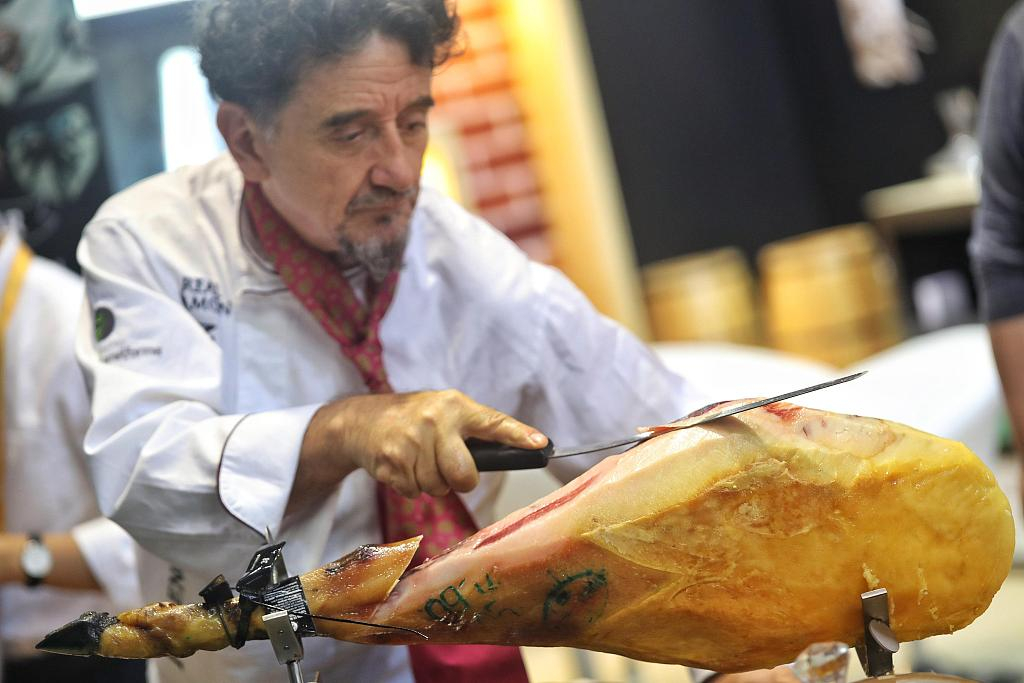
Editor's note: Alexandr Svetlicinii is an associate professor of law at the University of Macau, where he also serves as program coordinator for the Master of Law in International Business Law in English Language program. The article reflects the author's opinions, and not necessarily the views of CGTN.
During the current China International Import Expo in Shanghai, the EU commissioner for agriculture and rural development, Phil Hogan, and Chinese Minister of Commerce, Zhong Shan, have announced the completion of negotiations of the EU-China agreement on the protection of geographical indications (GI).
The parties hailed the deal as "one of the most significant trade agreement negotiated between the European Union and the People's Republic of China in recent years." This note highlights the major features and the significance of this agreement, which now will have to pass the relevant internal procedures in the EU (the European Parliament and the Council) and China to be concluded by the competent institutions and to enter into force by the end of 2020.
Currently, the Agreement on Trade-Related Aspects of Intellectual Property Rights (TRIPS), to which both EU and China adhere as members of the World Trade Organization, provides minimum standards for the protection of GIs but does not oblige the members to grant automatic protection of foreign GIs on their territory. As a result, the procedures for registration of GIs vary from country to country, which creates an additional administrative burden on the businesses willing to protect their products from unfair competition on the foreign markets.
In order to overcome these deficiencies, countries moved to protect their GIs through bilateral agreements. Due to the specifics of the European agribusiness, the EU has been one of the most active users of such bilateral agreements. Through such bilateral agreements, the European producers of wines and spirits benefit from the protection of their GIs in Australia, Mexico, Chile, South Africa, Canada, the United States, and several other countries.
In October 2019, the EU decided to join the Geneva Act of the Lisbon Agreement, a multilateral treaty for the protection of geographical indications managed by the World Intellectual Property Organisation (WIPO). On that occasion, EU trade commissioner Hogan remarked: "This is a step forward to better protect our geographical indications at a multilateral level. They mirror the EU's valuable geographical diversity, authenticity and know-how, in terms of agricultural products, food, and drinks. "

Spanish ham is one of the most popular products at the China International Import Expo in Shanghai, November 11, 2019. /VCG Photo
Spanish ham is one of the most popular products at the China International Import Expo in Shanghai, November 11, 2019. /VCG Photo
The negotiations between EU and China on the subject of GI protection date back to 2005. By 2012, the list of mutually protected GIs grew to twenty from each party. In 2017, the EU and China published an extensive list of 200 GIs (100 from each side), which form the basis of the bilateral agreement. On this occasion, EU commissioner for agriculture Hogan stated: "Working closely with our global trading partners such as China is a win: It benefits our farmer and agribusinesses; it develops stronger trading relationships between like-minded operators; and of course, it benefits consumers on both sides of the agreement."
At the EU-China Summit on April 9, 2019 in Brussels, the parties agreed to finalize the negotiations on the GI agreement in 2019, which has been announced on the occasion of the 2019 China International Import Expo in Beijing.
For the EU, the GI agreement with China is another step in solidifying the successful business strategy of its agricultural sector. GIs are one of the distinctive features of the European agribusiness, with over 3000 designations registered in the EU. The bilateral agreements concluded by the EU with other countries added more than 1000 non-EU GIs to this list.
It also represents a rare success in the way of EU-China trade and investment negotiations. The feeling of "promise fatigue" was expressed by Carlo D'Andrea, Vice-President of the EU Chamber of Commerce in China: "We want to see notable progress in providing European companies with the same unrestricted access to Chinese markets that their Chinese counterparts have in the EU."
For China, the agreement represents an important step in promoting the visibility of its products on the EU markets. Currently, Chinese foods and drinks suffer from insufficient visibility or recognition by European consumers. Until recently, China has been trying to protect its GIs through a network of bilateral free trade area agreements. These agreements are commonly referred to the TRIPS-level protection and included only a limited number of Chinese GIs.
The deal with the EU could also serve as a model for similar agreements with other important trading partners, including 49 countries participating in the Belt and Road Initiative, which in 2018 published the Joint Statement on pragmatic cooperation in the field of intellectual property. Thus the deal reached between China and EU deserves to be hailed as a milestone in stepping up China-EU trade relations and China's further opening-up.
(If you want to contribute and have specific expertise, please contact us at opinions@cgtn.com.)